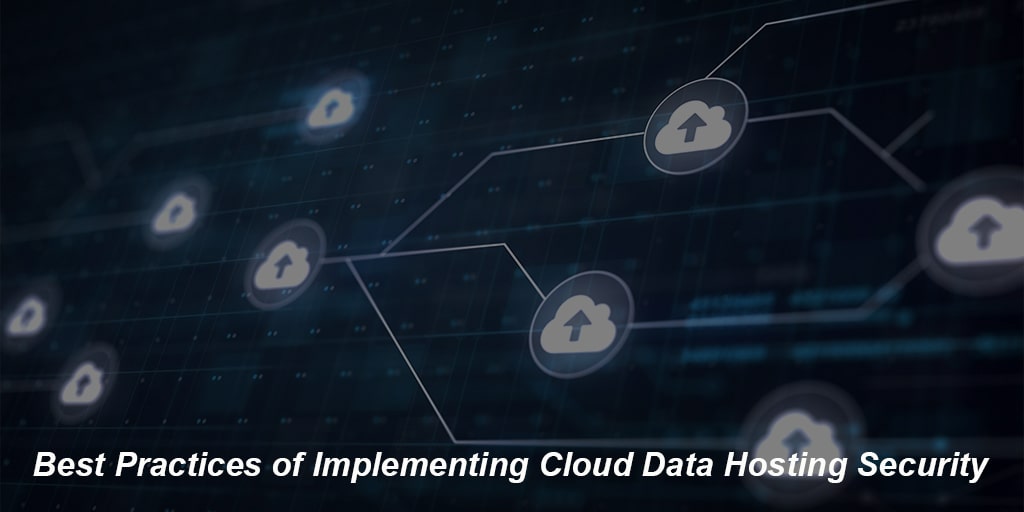Cloud data hosting has numerous benefits for businesses. Clouds offer efficient and low-cost data hosting and storage solutions. Additional benefits of cloud data hosting include data mobility, scalability, disaster recovery, and most importantly data security. That is the reason why businesses are rapidly opting for cloud data hosting.
Cloud data is accessible from everywhere. Most of the businesses have global cloud hosting accessibility. So, data privacy requirements are higher with cloud data hosting as the range of access is higher and compliance needs are broader due to local rules and regulations.
What Are the Common Security Threats to Cloud Data?
Cloud is a safer option for data security, but it is also not immune to hacks. There are numerous security measures taken by cloud service providers to protect the data on the cloud. Then, where does the cloud data security threat emerge from?
Well, it is from the human element! It can be purposeful or due to negligence. Two common forms of security breach or threat through the human element are data breach and data loss. Data breach means unauthorized access to your data by a third-party through a lost password or machine/laptop or a purposeful hacking attempt. Loss of precious data from the cloud can occur due to human error or a malicious attempt by a hacker.
How to Secure Your Data in the Cloud?
Cloud data hosting security is a mutual responsibility of the cloud service provider and the consumer organization. The CSPs need to implement all possible security measures at their end, but the consumer (organization) also needs to take appropriate steps to ensure added security at their end. This way, a breach at one of these ends can be thwarted at the other end.
Even the biggest organizations have not been able to design a foolproof way to fully secure their cloud data. But, through appropriate measures and security protocols, organizations can reduce the possibility of hacks and secure their cloud data to a large extent. Here are some ways or practices to secure your cloud data hosting.
1. Select the Right Hosting Provider
For most of the cloud security problems, the best solution is to select an experienced cloud hosting provider. This is not easy unless you know how to choose the vendor that is expert in this area and meets all your requirements.
But, the easiest way to do this is by making a comprehensive security policy at your end. This should include right from what data is stored, to how it is stored and retrieved, and also who is allowed access to what section of data. Then, you must review the security standards of the vendor that you are considering. If the standards match your needs, you can go for it.
2. Cloud Hosting Provider Agreements
Assuming that you have your data backup plans ready, now you must also decide what the hosting provider will do for you and what you are going to manage at your end. For everything that the vendor is expected to manage, you must have comprehensive agreements covering the details and span of the tasks.
Your provider must also assure or guarantee data privacy and non-disclosure as your data is with them. You can add any specific terms to the non-disclosure agreement as per your organization’s requirements.
3. Data Privacy Requirements
Most businesses choose cloud when they are operating across countries and regions. In such a situation, you must evaluate the regional security or privacy needs and requirements well. This will allow you to run your cloud hosting smoothly without incurring any losses or falling into any legal controversy.
Apart from the regional data privacy requirements, businesses operating through the cloud must also ensure GDPR compliance.
4. Data Backup and Recovery Strategy
No matter how secure you feel your cloud is, the golden rule of data management is that you must have your data backup and recovery strategies in place. These strategies have to include both long-term and short-term backup and recovery plans. It is crucial to identify where you are storing the backup. The size of the backup and the location also matter, and these have to be planned in advance.
Even though the CSPs claim that your data is safe on their cloud, loss of data does accidentally happen even with the most popular providers. So, the organizations need to make sure that the data backup and recovery process of their CSP meets their requirements. Besides, the organizations need to implement additional back-up and recovery measures at their end.
Through proper backup and recovery strategy, loss of critical data can be prevented and critical data made available when needed.
5. Identity and Authentication Management
Identity and Authentication Management is a set of procedures for protecting data from unauthorized access to include limiting access from personal devices, monitoring user activity and determining who accesses data and from where and when.
This helps identify any intruders and prevent the network from giving access to them. Also, this ensures continued access to critical data in the event of errors or breaches and prevents the accidental disclosure of data that was supposedly deleted.
Implement multifactor authentication or role-based access control for different types of users, admins, and managers. Use IP location lockdown limiting access to fixed IP locations.
6. Data Encryption
Data encryption is one of the most conventional practices in data security. The techniques of encryption have persistently improved over the years. Encryption denies access to unauthorized users to keep data safe. If a hacker steals an encrypted file, access is denied without finding a secret key. The data is worthless to anyone who does not have the key.
To protect the cloud data from unauthorized access, cloud service providers offer encryption capabilities with their storage services. Consumers need to properly manage the encryption keys to ensure the safety of cloud data. Typically, two models are available for this. One where the keys are managed by the CSP. This is convenient for the consumer organization but leaves them with no control over how the keys are stored. The other model is consumer-managed keys where the burden of key management is on the consumer organization. Here, the consumers have better control over the key and its storage. Choose between the two models based on the needs and capabilities of your organization.
7. Safeguarding the Deleted Data
Certain data is no longer needed by your organization and needs to be deleted from the cloud. But, remember this can still be accessible to a third-party or hacker in case of a security breach.
So, another important cloud data security measure is to prevent the disclosure or unauthorized access to the deleted data. When you need to delete any sensitive data, it is pertinent to be aware of and analyze the possibilities of copies of the same data in cache or back-ups and delete these. Also, inquire how your CSP manages the deleted data at their end!
8. Antivirus and Firewalls
While the simple firewalls manage only the data packets moving in the cloud network, the advanced firewalls manage even verification of the packet content integrity.
Implement endpoint security measures to secure the end-user devices accessing the cloud resources with firewalls and antivirus software. This way the damage of a security breach on the cloud can be minimized.
9. Physical Security Measures
It is necessary to ensure that the cloud data centers have a secure infrastructure with strict security protocols, 24-hour monitoring, and armed guards.
It is equally important to make the employees of your organization aware of the importance of data security at all levels. Provide training to your employees for awareness on the significance of phishing protection and multi-level authentication process. Also, conduct breach simulation drills to confirm that the employees are well-prepared to promptly tackle any real security breach.
Wrapping Up
Over the years, as the cloud is becoming the preferred hosting option for businesses, advanced cloud security practices have evolved. The way technology is helping improve cloud data security each-day, hackers are also getting smarter and generating new techniques for breach.
Even a minor incident of a data security breach can have much larger effects than what you can perceive. It is indicative of a deficient process and a bigger threat and can make your organization or business lose trust among the stakeholders and customers. As rightly said by Don Brown,
“An incident is just the tip of the iceberg, a sign of a much larger problem below the surface.”
Sensitive data holds the same importance for your organization as a weight-bearing column or a pillar does to the building structure. So, implement these measures and practices to improve your cloud data hosting security and strengthen the pillars of your organization!






